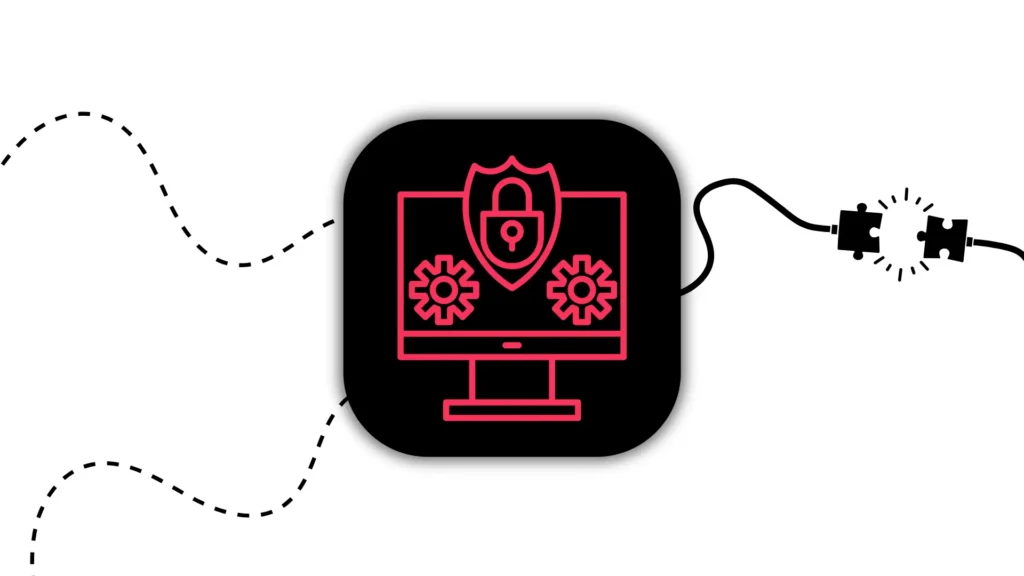Alright. Imagine you have a magic plant in your garden that doubles in size every day.
On the first day, it’s as tall as your knee. The next day, it doubles and reaches your waist. On the third day, it doubles again and goes all the way up head-high. As the days pile up, the plant keeps on doubling its growth. In just a month, it sprouts way past Jack’s magic beanstalk.

The magic plant concept is what we now know as exponential growth. It’s when something keeps increasing at a faster and faster rate with no signs of slowing down. And technology… well, it’s The Plant. You know, what started with a floppy disk, ended up with folks testing microchips on monkeys. Far from linear, right?
Technology’s life cycle is becoming shorter year by year. IT systems that seemed ready only a few years ago run obsolete. Forerunners are disrupting industries. AI is getting closer to “as advertised”. Expectations are evolving in a race to the most advanced, connected, and smooth digital experience; and where does that leave you?
Behind?
Facing the cold, hard facts, if your business clings to “old ways”, it’s not just years behind since the last update. It’s behind by the rate of growth that has occurred since then.
If you’re wondering whether your business is struggling to catch up, here are the warning signs you should bring into focus quickly. A little push now is way better than a mountaineering journey a few years from now.
#1 Not Putting Customer Value First
There are lots of reasons why a company might decide to update its tech. Beating the competition, making more money, or being more flexible – to name a few. But the overarching goal is really simple: you want to find a way to make customers happier.
When you spend money on technology, it should make things better for your customers. Whether that means they have a better time using your product or your services become more convenient.
Estonia’s healthcare makeover is one example of this mode of thinking. They amped things up to make sure healthcare is easy and open to everyone. Now, doctors operate the tools that let them check patients’ records in one place. Doctors seeing test results, even X-rays from far-off hospitals, as soon as they’re entered is just one perk of this change.
Why did they do it? Well, they wanted to make sure people got the best healthcare.
Nowadays, the initiative has seen such success to be held as an example to other public services considering similar transformations; both in and outside the country’s borders.
The fundamental truth got Net Group excited too. It led to the forming of teams that work hard to make health systems even better, with intensified focus on patients – the people. Making a real difference for your customers – your people – will propel your digital transformation efforts. It will serve as a motivating factor, lower the cultural problems involved with a change, and increase the odds of success.
If you’re curious about whether your company puts customers first, here’s a simple way to figure it out.
Reality-check Your Business:
- Does our mission and vision statement reflect our customer value?
- Do we have deep, data-backed insights into our customers?
- Are we solving the most crucial problems our customers have?
#2 Tech Leads Sweating About Infrastructure

Ever seen your tech leads sweating bullets, hyperventilating, and throwing around weird deadlines? Well, it’s not them; it’s probably outdated systems that are causing all the chaos in their heads.
Seasoned in history, businesses can end up with a mishmash of coding languages, data structures, and support setups.
Well, a set of puzzles awesome in their ways but a nightmare to upgrade or mesh together. As the business evolved over the years, the underlying architecture tended to get more knotted with time. Courtesy of as-needed approach.
So, once you read the warning signal, what’s the fix?
For starters, blaming it on the people in charge of infrastructure won’t mend the issue. At least not if your core business isn’t IT. Here’s what we mean by this.
A. Loacker Spa/AG (Loacker), a leader in the wafer market specializing in chocolate confection production, wanted to modernize its infrastructure. Flexibility, accessibility, and resiliency – they craved all of it. On the surface level, their concern was, of course, infrastructure. However, the words of the IT infrastructure manager unveil the more profound problem: “We are a manufacturing company, not a technology company, so adoption of new technologies is a bit challenging”.
Right there, hits the bullseye. If you’re a chocolate maker, you probably shouldn’t be making a software. As obvious as this sounds, many business leaders tend to defy this common sense.
Understanding the nature of your business is crucial when navigating digital change. Recognizing that your core expertise may not lie in IT will allow you to get help and focus on what matters.
Reality-check Your Business:
- Is the current system environment flexible enough to support business needs?
- What functionalities are crucial, but absent, because of our infrastructure?
- Are we employing any help in regards to IT?
#3 AI Is a Silent Partner Instead of a Strategic Ally
AI – it’s pretty much everywhere these days, isn’t it? Chances are you and most of your colleagues are (quietly?) bringing in AI tools, like Chat GPT or video editing software, for their daily tasks. Now, it’s great that everyone’s finding their own ways to use tech. But if it’s happening without a clear plan, your company might be missing out on the bigger picture.
The warning sign? Well, if using AI is still in a hush-hush phase around your place, you may have a problem. If people aren’t talking openly about using AI, it could mean they’re reluctant to adopt new ways to find solutions. It could also mean there’s resistance to change and a potential knowledge gap – the usual root causes for delayed use of AI as a practical solution.
The fix? For starters, create a culture where you not only use AI but also openly talk about it.
Cheer on when people share the pros, the hiccups, the nitty-gritty… The whole shebang of AI. Putting everything in the open creates a workplace that’s not just in sync with the trends but is actively shaping them. By openly talking about AI, you foster an environment where everyone benefits from shared insights.
In light of this, the company may end up welcoming the thought of innovation earlier. Chieftains may look around and consider the role of AI in their respective industries. For instance, manufacturing businesses are already using it to predict production line breakdowns, minimize human errors, and streamline redundant tasks. Moreover, garment production is leveraging AI for computer-aided design, production planning, fabric cutting process, etc.
The applications are as wide as the ocean already. The simple pat on the back for talking about it may be the stepping stone to a collective adoption.
Reality-check Your Business:
- Do your employees share their experience in using AI?
- Are employees incentivized to use AI tools?
- Are you organizing education to help employees make sense of AI?
#4 Informal Leaders Are Not Digital Enthusiasts

There is one pivotal aspect of all organizations that often goes overlooked. You guessed it: informal leaders.
The unsung opinion-makers – the critical few – who navigate without much concern for the hierarchy and rather act by their own compass. Their actions, often subtle, set the tone for others to follow, even if it happens outside the formal agenda. Over a coffee, say, or by redirecting the focus of the meeting with a thought-provoking comment. Do you already have teammates that come to mind who fit this description?
Good. If these ‘critical few’ are not comfortable with technological change, the company is swimming against the current.
You need these movers and shakers to rally behind positive initiatives even if it implies collective discomfort. They are the general consensus. They wield the potential to steer the trajectory of our company.
When aligned with the leadership they offer insights into the pulse of your organizational readiness for change. They pinpoint potential areas of resistance and provide a nuanced understanding of the magnitude of effort required to overcome cultural hurdles.
Reality-check Your Business:
- Have you already identified the company’s informal leaders?
- Are these leaders supportive of business initiatives and technology changes?
- Are your leaders go-getters and accountable in their work?
The best time to plant a tree was 20 years ago. The second best time is now.
Old Chinese Proverb
The key to digital success lies in reading the signals and recognizing the imperatives of the digital age. The ability to do so will turn innovation, not just into a choice, but a collective value. So – if you’ve read the signals – the time to course correct is now.
May your plant blossom to new heights.
Similar insights

How to Pitch and Get Your Ideas Approved at Work
12/11/2025
12 AI Cyberattacks That Made CEOs Very Cautious
21/10/2025
14 Books Smart Tech Leaders Are Reading This Fall
07/10/2025
Protect Your Crown Jewels: The Heart of Your Cybersecurity
15/09/2025
How Renown Business Executives are Using AI?
12/08/2025
Think You’re Secure? PEN Testing Will Tell You
15/05/2025
NIS2 Compliance: A Simple Guide to Get It Done Right
15/05/2025
NIS2 Directive Explained: What Your Business Needs to Do Now
29/04/2025
Net Group Expands into Germany and Acquires Cybersecurity Company
04/04/2025
Let the success
journey begin
Our goal is to help take your organization to new heights of success through innovative digital solutions. Let us work together to turn your dreams into reality.